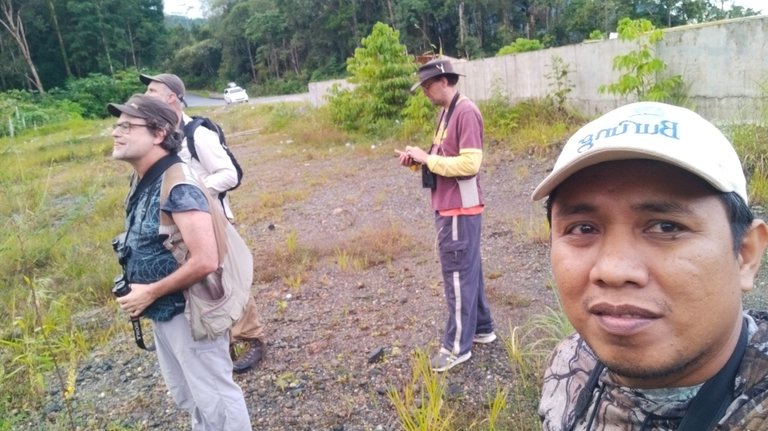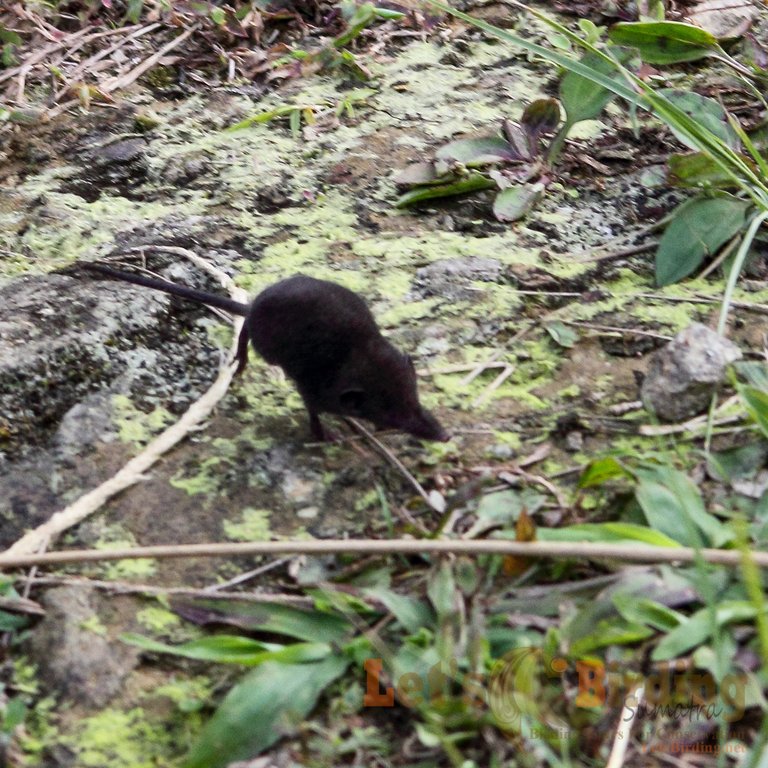
The northern highlands of Sumatra hold many natural secrets that may not be widely known, even by researchers. In this region, I had the rare opportunity to meet one of the rarely seen species: the Sumatran long-tailed shrew (Crocidura paradoxura). This encounter not only provided insight into the biodiversity of Sumatra's forests, but also reminded us of the importance of preserving natural habitats that are increasingly threatened by human activities.

Species Description and Habitat
The Sumatran long-tailed shrew is one of the few small mammals rarely seen in the wild. It has a small body with a relatively long tail, as its name suggests, and is known to be a shy and elusive species. Living in the highlands of Sumatra, it is adapted to the dense tropical rainforest ecosystem. Its habitat is mostly hidden among dense vegetation and moist soil, making an encounter with it a rare experience.
Encounter Experience
At that time, I was birdwatching in the northern highlands of Sumatra with several friends from abroad. My attention was initially drawn to the sounds of birds and signs of other wildlife. However, while resting in a hut, I saw a small movement under dry leaves and grass. As I approached carefully, the Sumatran long-tailed shrew suddenly appeared. With agile and alert movements, this small animal slid between the leaves and the lush grass as if it knew how fragile its existence was.


This encounter only lasted long enough, enough to observe the unique physical details of its body. I called everyone and they began to be interested and started taking photos. Silently, I felt amazed at the richness of fauna in this forest which is not only filled with large animals, but also small creatures that are often overlooked by human sight.
Why Is This Encounter Important?
The presence of species like the Sumatran long-tailed shrew shows that Sumatra’s forests are not just home to the big animals that attract the public’s attention, but also to a variety of smaller species that play important roles in the ecosystem. They play a role in the food chain as predators of small insects and other organisms, and they help decompose organic matter on the forest floor. Every species, no matter how small, has an irreplaceable role.
In addition, this encounter reminded me of the importance of learning more about small species that tend to be overlooked in conservation research. Many of these species are vulnerable to environmental change and habitat loss.
Conclusion
This brief encounter taught me that the forests of Sumatra still have natural riches waiting to be discovered. This moment also taught me an important lesson: that we are not only responsible for protecting large and iconic species, but also small species hidden behind the leaves and soil of the forest. Through experiences like this, I am increasingly motivated to voice the importance of holistic conservation, in order to maintain the sustainability of the ecosystem that involves all layers of life, including small creatures that are rarely seen but have an equally important role.


#adventure
#birdingtour
#birdwatching
#mammal
#FaunaFlora
| Camera | lens | Location |
|---|---|---|
| Canon 60d | Sigma 150-500 | Aceh, Sumatra, Indonesia. |
I have never seen this animal before, what a great find♥️
Thanks 👍🏻
You're welcome, keep up the good work 💪
Congratulations @tediwahyudi! You have completed the following achievement on the Hive blockchain And have been rewarded with New badge(s)
Your next target is to reach 300 upvotes.
You can view your badges on your board and compare yourself to others in the Ranking
If you no longer want to receive notifications, reply to this comment with the word
STOPCheck out our last posts: